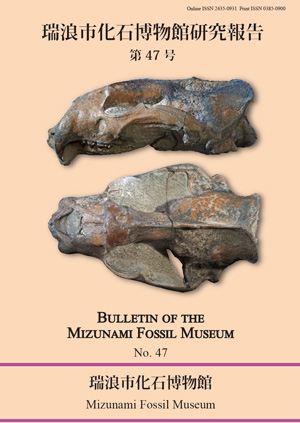Current issue
Displaying 1-15 of 15 articles from this issue
- |<
- <
- 1
- >
- >|
-
2024 Volume 50 Issue 3 Pages I-XVI
Published: March 29, 2024
Released on J-STAGE: March 29, 2024
Download PDF (1400K) -
2024 Volume 50 Issue 3 Pages 1-12
Published: March 29, 2024
Released on J-STAGE: March 29, 2024
Download PDF (2686K) -
2024 Volume 50 Issue 3 Pages 13-16
Published: March 29, 2024
Released on J-STAGE: March 29, 2024
Download PDF (308K) -
2024 Volume 50 Issue 3 Pages 17-28
Published: March 29, 2024
Released on J-STAGE: March 29, 2024
Download PDF (803K) -
2024 Volume 50 Issue 3 Pages 29-42
Published: March 29, 2024
Released on J-STAGE: March 29, 2024
Download PDF (2277K) -
2024 Volume 50 Issue 3 Pages 43-50
Published: March 29, 2024
Released on J-STAGE: March 29, 2024
Download PDF (621K) -
2024 Volume 50 Issue 3 Pages 51-57
Published: March 29, 2024
Released on J-STAGE: March 29, 2024
Download PDF (691K) -
2024 Volume 50 Issue 3 Pages 59-66
Published: March 29, 2024
Released on J-STAGE: March 29, 2024
Download PDF (582K) -
2024 Volume 50 Issue 3 Pages 67-72
Published: March 29, 2024
Released on J-STAGE: March 29, 2024
Download PDF (556K) -
Echinoid discovered from the excavation site of a paleoparadoxiid in Kamado, Mizunami, central Japan2024 Volume 50 Issue 3 Pages 73-74
Published: March 29, 2024
Released on J-STAGE: March 29, 2024
Download PDF (217K) -
2024 Volume 50 Issue 3 Pages 75-80
Published: March 29, 2024
Released on J-STAGE: March 29, 2024
Download PDF (734K) -
2024 Volume 50 Issue 3 Pages 81-89
Published: March 29, 2024
Released on J-STAGE: March 29, 2024
Download PDF (1351K) -
2024 Volume 50 Issue 3 Pages 91-97
Published: March 29, 2024
Released on J-STAGE: March 29, 2024
Download PDF (612K) -
2024 Volume 50 Issue 3 Pages 99-108
Published: March 29, 2024
Released on J-STAGE: March 29, 2024
Download PDF (638K) -
2024 Volume 50 Issue 3 Pages 109-111
Published: March 29, 2024
Released on J-STAGE: March 29, 2024
Download PDF (439K)
- |<
- <
- 1
- >
- >|
